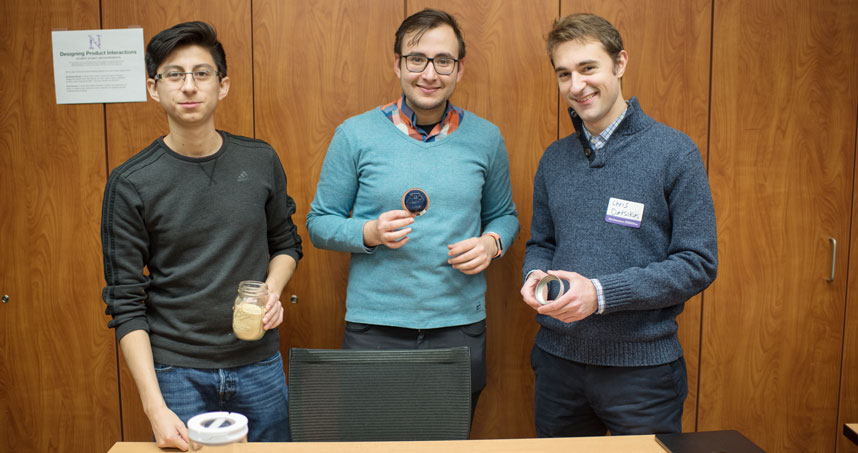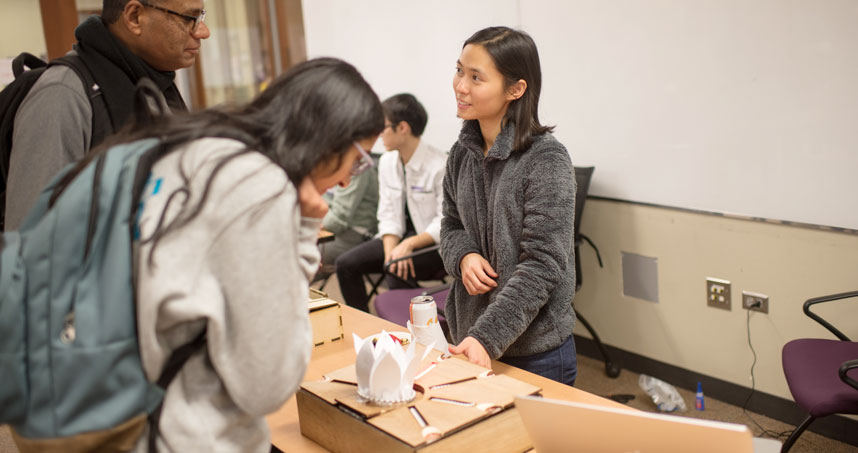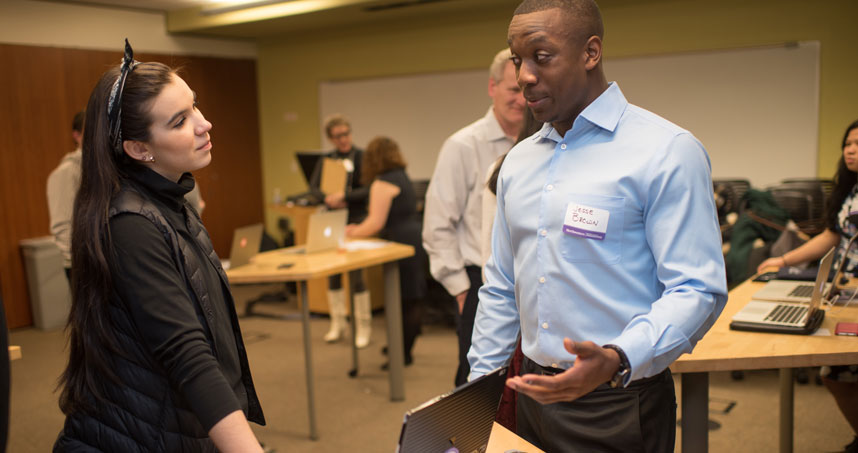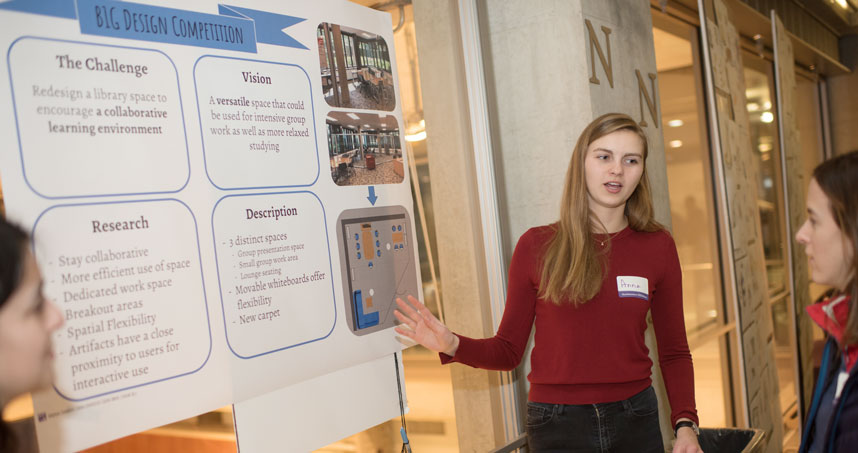Student Projects Showcased at Fall Design Expo
The event took place in the Ford Motor Company Engineering Design Center on December 7-8
We’ve all been there: stuck in the grocery store checkout line with a nagging suspicion that your order isn’t quite complete. Unable to remember what you need, it’s only after arriving home and surveying your pantry that you realize what it was that you forgot to grab.
Now, a team in the MS in Engineering Design Innovation (EDI) program has developed a new way to avoid running out of food or purchasing more than you need. Their solution, called Niche, is a small smart device that attaches to reusable containers and tracks their inventory as items are taken out.
Niche was one of the projects on display at the fall Design Expo and Design Innovation Open House. Held on Friday, December 7, in the Ford Motor Company Engineering Design Center, the annual Segal Design Institute event featured project prototypes and portfolios from several Segal courses, programs, and student groups, including Segal Design Certificate, Manufacturing and Design Engineering, and Design for America.
Using the Niche app, users can view accurate measurements of common grocery items on their smartphone — from coffee to sugar to produce — at home and on the go. They can also create an integrated ‘smart’ shopping list and view visual analytics of how their household products and groceries are being used, helping avoid follow-up trips to the grocery store.
Niche was developed in DSGN 407: Making Things, a course within the EDI program that teaches students the entire product realization process, from opportunity exploration to conception. The team is further developing the product as a resident team in Northwestern’s The Garage.
“We heard about experiences from people who were halfway through baking something in their kitchen and realized they were out of a key ingredient,” said Christopher Datsikas, Niche’s hardware lead and a student in the EDI program. “We wanted to tackle the issue of running out or overstocking items, especially for parents of large families.”
Another project at the Open House sought to assist civilian first responders in emergency situations. Through programs like the Northwestern University Community Emergency Response Team, civilians are increasingly learning skills to provide initial injury care while waiting for first responders to arrive. One often-used tool, the tourniquet, compresses injured limbs to stop bleeding. Yet while tourniquets are commonplace in trauma care, they are often distributed without clear instructions on how to use them.
Andrew Webber, an Army West Point graduate and current student in the Northwestern Pritzker School of Law, approached student Christine Hickernell and her team in the Segal Design Certificate program to design a wound treatment kit that would be more intuitive to civilian first responders. The team modeled their own simplified tourniquet device in SolidWorks as well as conducted usability testing on the device and package instructions.
Hickernell led the team in designing a wound kit package with easy-to-follow instructions in high stress situations. The four-step instruction guide uses color and hierarchical text size to highlight the most important information, while also distinguishing between variations in caring for different types of injuries.
“Treating a blood wound on the leg is different than treating a blood wound on the shoulder,” said Hickernell, a senior studying mechanical engineering. “We wanted to design a universal product that’s accessible to everyone with proper training and could stand alongside fire extinguishers or AEDs as lifesaving tools in public spaces.”
Other projects displayed at the Open House included:
- A stuffed animal to help children who communicate non-verbally feel more comfortable at the doctor’s office (Design for America)
- An injection molded pizza toy with removable toppings (Segal Design Certificate)
- A redesign of a project room in the Northwestern University Main Library to enhance flexible collaboration (Big Ten Student Design Challenge)
- A roller-press device to streamline laundry operations and reduce cost, allowing Evanston-based shelter Interfaith Action to operate throughout the winter (Design for America)
The Design Expo continued on Saturday, December 8, when first-year student teams enrolled in the Design Thinking and Communication (DTC) course shared their design solutions with project clients as part of the Design Expo’s DTC Project Fair. Clients included Shirley Ryan AbilityLab, Kids in Danger, and Lamb’s Farm.



